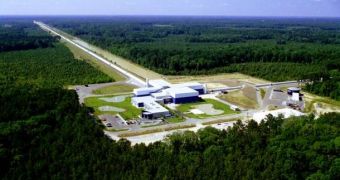Through accurate scientific analyses of datasets collected in 2005 and 2007, experts at the Laser Interferometer Gravitational-Wave Observatory (LIGO) Scientific Collaboration and the Virgo Collaboration have managed to establish the most accurate limits on how gravitational waves formed and extended throughout the Universe to date. The research allows astronomers and astrophysicists to gain a better understanding of the first moments that followed the Big Bang, ScienceDaily reports.
The new study also reveals with the highest degree of accuracy possible the maximum amount of gravitational waves that could have been formed from this event. Knowing how many of them there are, and how strong they were when they appeared may explain interesting phenomena such as the movement of galaxies and space-time distortions.
Gravitational waves are defined by researchers as ripples or fractures in the fabric of space and time as we know them. They are also believed to exist to this day, moving through the Cosmos carrying information about how the Universe looked less than a minute after it exploded into being.
The research, which is published in the August 20th issue of the respected scientific journal Nature, also deals with cosmic strings, hypothetical formations that may have appeared shortly after the Big Bang, and that were stretched by the ever-accelerating expansion of the Universe to extreme lengths. Some astronomers believe that these objects may be a possible source of gravitational waves, as they vibrate, oscillate, decay, and eventually disappear. The analysis has been conducted with the LIGO interferometers and the GEO600 interferometer, in Germany, since 2002, but the Virgo interferometer joined in on the efforts in 2007.
Gravitational waves were first proposed by Albert Einstein in his theory of general relativity, back in 1915. Since then, science has advanced to a point that has allowed for the creation of extremely precise interferometers. Each of these instruments has two arms, situated between one and four kilometers apart from each other. The theory states that a G-wave passing through would compress one arm, while elongating the other. The modern varieties are able to detect variations of less than a thousandth the diameter of an atomic nucleus.
“We now know a bit more about parameters that describe the evolution of the universe when it was less than one minute old. We also know that if cosmic strings or superstrings exist, their properties must conform with the measurements we made – that is, their properties, such as string tension, are more constrained than before. This result was one of the long-lasting milestones that LIGO was designed to achieve,” University of Minnesota Assistant Professor Vuk Mandic explains.

 14 DAY TRIAL //
14 DAY TRIAL //